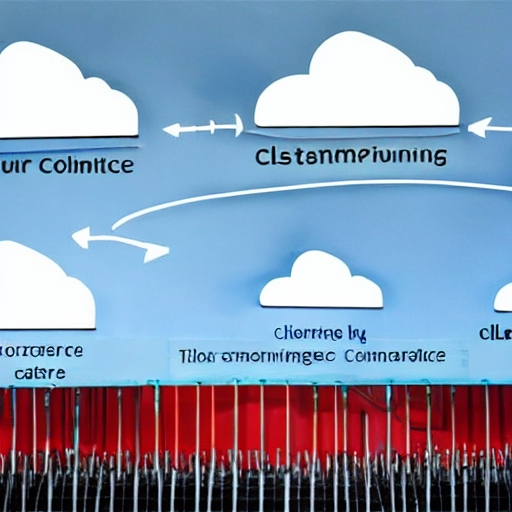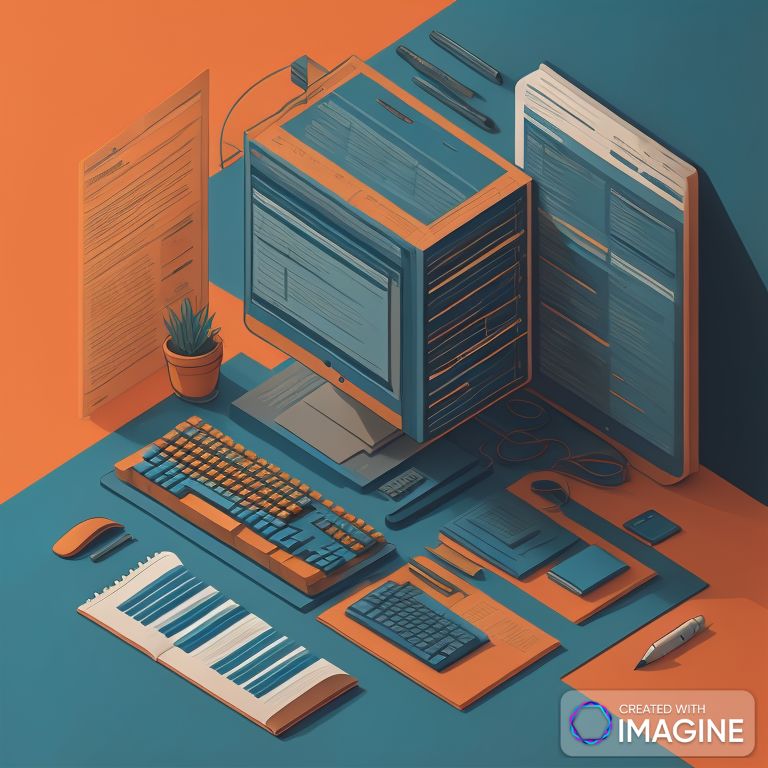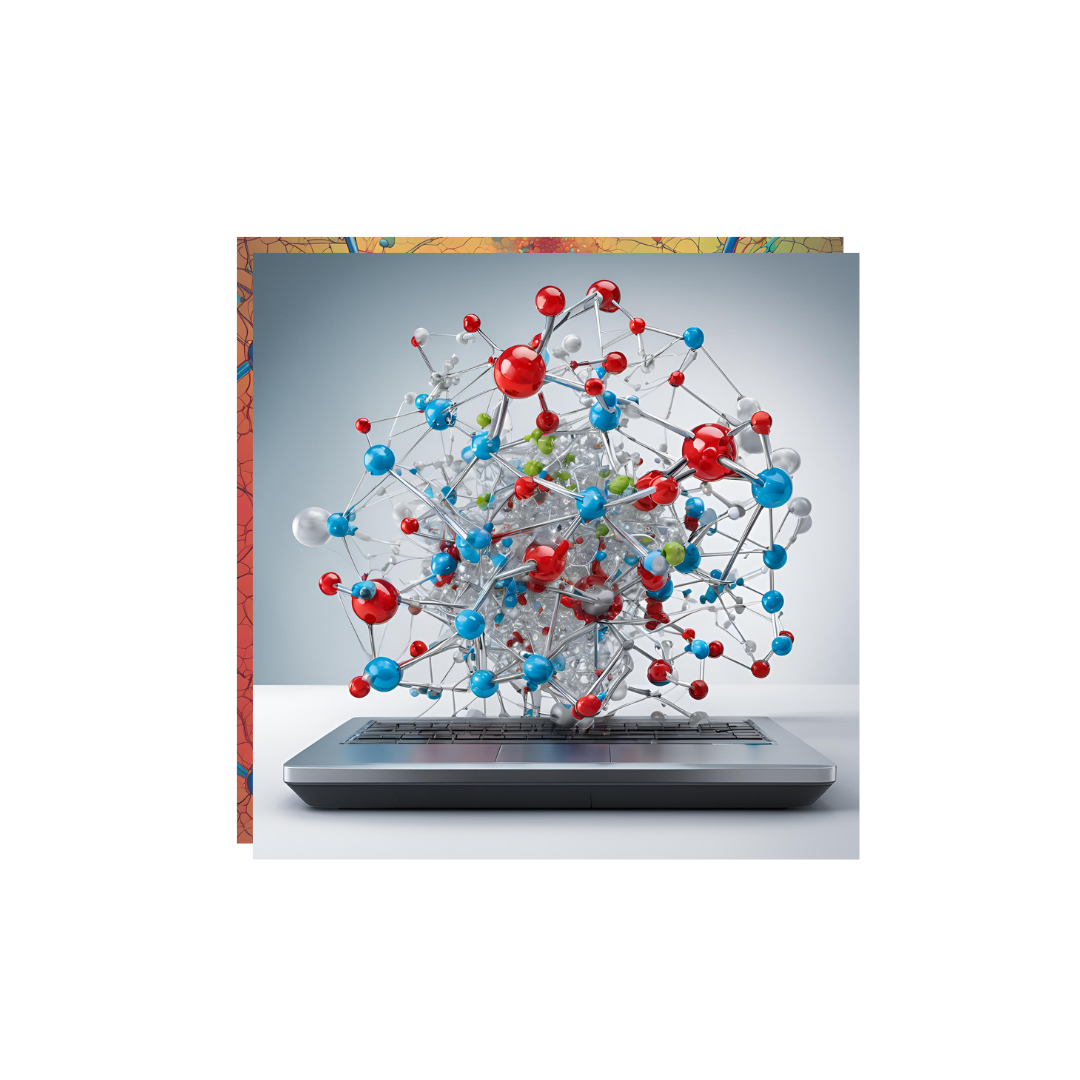Introduction: Cloud computing has become an indispensable part of the technological landscape, revolutionizing the way businesses operate and individuals access services. As we navigate through the dynamic realm of technology, it’s crucial to stay abreast of the latest trends shaping the future of cloud computing.
- Hybrid and Multi-Cloud Adoption: Organizations are increasingly embracing hybrid and multi-cloud strategies to optimize their infrastructure. This approach allows them to leverage the strengths of different cloud providers and maintain flexibility in resource allocation. As businesses seek to avoid vendor lock-in and enhance resilience, the hybrid and multi-cloud model has gained substantial traction.
- Edge Computing Integration: Edge computing is emerging as a game-changer, bringing computation and data storage closer to the source of data generation. This trend is crucial for applications demanding low-latency responses, such as Internet of Things (IoT) devices and real-time analytics. The integration of edge computing with cloud services is set to reshape how data is processed and utilized.
- Serverless Computing Evolution: Serverless computing is evolving to simplify application development and management further. With the serverless model, developers focus solely on code, and the cloud provider takes care of infrastructure management. This results in improved scalability, reduced operational overhead, and cost-effectiveness. The rise of serverless architectures is transforming the traditional approach to application deployment.
- Artificial Intelligence and Machine Learning Integration: Cloud computing is becoming the bedrock for AI and machine learning applications. Cloud providers are offering specialized services and tools for training and deploying machine learning models at scale. This trend is empowering businesses to harness the power of AI without the need for extensive in-house expertise, opening new avenues for innovation.
- Containerization and Kubernetes Orchestration: Containerization, particularly using technologies like Docker, is gaining widespread adoption. Kubernetes, an open-source container orchestration platform, has become the go-to solution for managing containerized applications in a scalable and automated way. The containerization trend streamlines deployment, enhances portability, and facilitates efficient resource utilization.
- Zero Trust Security Model: Security remains a top priority in the cloud computing landscape. The Zero Trust security model is gaining prominence, emphasizing continuous verification and strict access controls. As organizations navigate the challenges of securing distributed environments, the Zero Trust model ensures that security measures are implemented consistently across all layers of the infrastructure.
- Sustainable and Green Cloud Computing: Sustainability is increasingly becoming a focal point in cloud computing. Cloud providers are investing in renewable energy sources, energy-efficient data centers, and eco-friendly practices to reduce their environmental impact. This trend reflects a growing awareness of the need for responsible and sustainable technology solutions.
- DevOps and Cloud Collaboration: The synergy between DevOps practices and cloud computing is strengthening, fostering a culture of collaboration and continuous integration. Automation tools streamline development, testing, and deployment processes, enabling teams to deliver software faster and with higher quality. This collaboration is pivotal in achieving agility and responsiveness to market demands.
- Quantum Computing Exploration: While still in its nascent stages, the exploration of quantum computing within cloud services is gaining momentum. Cloud providers are beginning to offer access to quantum computing resources, allowing researchers and businesses to experiment with quantum algorithms. As quantum computing matures, it holds the promise of solving complex problems that are currently beyond the capabilities of classical computers.
- Blockchain Integration for Enhanced Security: Blockchain technology is being integrated into cloud solutions to enhance security and transparency. The decentralized and tamper-resistant nature of blockchain makes it an attractive option for securing transactions, data, and identity in cloud environments. This integration addresses concerns related to data integrity, authentication, and trust in cloud-based systems.
- 5G Impact on Cloud Services: The rollout of 5G networks is influencing cloud computing by providing faster and more reliable connectivity. The low latency offered by 5G networks enables real-time interactions and enhances the performance of cloud applications. Cloud services are adapting to leverage the capabilities of 5G, opening doors to new possibilities in areas such as augmented reality, virtual reality, and mobile edge computing.
- Data Management and Governance: As the volume of data continues to grow exponentially, effective data management and governance are critical. Cloud providers are offering advanced tools for data storage, processing, and analytics. Additionally, there is a heightened focus on compliance with data protection regulations, driving the development of features that enable users to maintain control and visibility over their data.
- Immersive Technologies on the Cloud: The integration of immersive technologies like augmented reality (AR) and virtual reality (VR) into cloud services is expanding. Cloud platforms are providing the infrastructure and tools necessary for developing, deploying, and scaling AR and VR applications. This trend is particularly relevant in industries such as gaming, healthcare, and education.
- API-First Development Approach: An API-first development approach is gaining popularity, emphasizing the importance of well-designed and easily consumable APIs. Cloud services are evolving to provide comprehensive and user-friendly APIs, enabling developers to build applications that seamlessly integrate with various cloud-based functionalities. This approach accelerates development cycles and promotes interoperability.
- Regulatory Technology (RegTech) Solutions: With an increased focus on regulatory compliance, cloud computing is witnessing the emergence of RegTech solutions. These solutions leverage cloud capabilities to streamline and automate regulatory processes, ensuring that organizations can efficiently adhere to complex and evolving compliance requirements. This trend addresses the challenges associated with navigating a rapidly changing regulatory landscape.
- Augmented Cloud Services with AI Assistants: Cloud providers are incorporating AI-powered virtual assistants to enhance user experience and streamline operations. These assistants leverage machine learning algorithms to understand user queries, automate routine tasks, and provide intelligent insights. This trend simplifies interactions with cloud platforms and improves overall efficiency.
- Immutable Infrastructure for Enhanced Stability: Immutable infrastructure is gaining traction as a strategy to enhance system stability and reliability. Instead of making changes to existing infrastructure, immutable infrastructure involves replacing instances with updated versions. This approach reduces the risk of configuration drift and ensures consistency across different environments, contributing to a more robust cloud infrastructure.
- Data Democratization Through Cloud Data Lakes: Cloud data lakes are becoming central to democratizing access to large volumes of data. Organizations can store diverse data types in their raw form and analyze them using various tools. This approach promotes collaboration across teams and enables data-driven decision-making by providing a centralized and accessible repository for structured and unstructured data.
- Cloud-Native Development and Microservices Architecture: Cloud-native development practices, coupled with microservices architecture, are reshaping how applications are built and deployed. This approach involves developing applications as a collection of independently deployable microservices, allowing for greater agility, scalability, and resilience. Cloud providers offer specialized services and tools to support the development and deployment of cloud-native applications.
- Ephemeral Computing for On-Demand Resources: Ephemeral computing involves the creation of temporary instances or resources on-demand and disposing of them when no longer needed. This trend aligns with the pay-as-you-go model of cloud services, enabling organizations to optimize resource utilization and cost-effectively scale their infrastructure based on fluctuating workloads.
- Continuous Compliance and Automated Auditing: With the increasing focus on compliance and security, cloud providers are integrating tools for continuous compliance monitoring and automated auditing. These tools help organizations adhere to regulatory standards by automatically assessing and validating their cloud infrastructure against predefined compliance policies, reducing the risk of security vulnerabilities.
- Cloud Cost Management and Optimization: As cloud usage grows, optimizing costs becomes a critical consideration. Cloud providers are offering tools and services for monitoring and optimizing resource usage. This includes features like cost tracking, budgeting, and recommendations to help organizations manage their cloud spending efficiently while maintaining performance.
- Integration of Cloud with Edge AI: The combination of edge computing and AI, known as Edge AI, is evolving to address the need for real-time processing of data at the edge of the network. Cloud providers are extending their services to seamlessly integrate with edge devices, enabling the deployment of AI models closer to the data source for improved efficiency and reduced latency.
- Collaborative Cloud Development Platforms: Collaborative cloud development platforms are emerging to facilitate teamwork and code collaboration in distributed environments. These platforms provide integrated tools for version control, continuous integration, and collaboration, allowing development teams to work seamlessly regardless of geographical locations.
- Serverless Security Best Practices: With the rise of serverless computing, ensuring robust security practices is paramount. Cloud providers and security experts are defining best practices for securing serverless architectures, including proper configuration, access controls, and regular monitoring. This focus on serverless security aims to address potential vulnerabilities in serverless applications.
- The evolving landscape of cloud computing continues to be shaped by a multitude of technological advancements. From the integration of AI assistants and immutable infrastructure to the democratization of data through cloud data lakes, these trends collectively contribute to a more efficient, flexible, and secure cloud ecosystem. Staying informed about these developments is crucial for organizations seeking to harness the full potential of cloud computing in their digital transformation journeys.
- Federated Learning for Privacy-Preserving AI: Federated learning is gaining prominence in the cloud, allowing AI models to be trained across decentralized devices without exchanging raw data. This approach enhances privacy by keeping data localized while still benefiting from the collaborative intelligence of a global model. Cloud providers are exploring ways to integrate federated learning into their services to address privacy concerns.
- Composable Infrastructure for Flexibility: Composable infrastructure allows organizations to dynamically compose and recompose their physical resources based on workload requirements. Cloud providers are adopting this concept, providing tools that enable users to allocate resources such as compute, storage, and networking dynamically. This flexibility enhances resource utilization and agility in responding to changing business needs.
- Immutable Storage and WORM (Write Once, Read Many) Technology: Immutable storage, coupled with Write Once, Read Many (WORM) technology, is becoming essential for ensuring data integrity and compliance. Cloud providers are offering immutable storage solutions that prevent data from being altered or deleted once written, providing a secure and tamper-proof repository for sensitive information, particularly in regulated industries.
- Explainable AI (XAI) for Transparency: Explainable AI (XAI) is gaining significance, especially in applications where understanding the decision-making process of AI models is crucial. Cloud providers are incorporating tools and frameworks that make AI models more interpretable and transparent. This not only enhances trust in AI systems but also aids in meeting regulatory requirements for transparency.
- Blockchain-based Smart Contracts in Cloud Services: The integration of blockchain extends beyond data security. Cloud providers are exploring the use of blockchain for smart contracts, self-executing contracts with the terms of the agreement directly written into code. This enhances transparency, reduces the need for intermediaries, and provides a secure and automated way to enforce contractual agreements within cloud-based systems.
- Cloud-Native Security Posture Management (CNSPM): Cloud-Native Security Posture Management is gaining prominence as organizations seek comprehensive security solutions tailored to cloud-native architectures. These tools help organizations assess and enforce security policies, detect misconfigurations, and ensure compliance with security best practices in their cloud environments.
- Micro Frontends for Modular Front-End Development: Following the microservices pattern, micro frontends are gaining traction for building modular and scalable front-end applications. Cloud providers are supporting the deployment and management of micro frontends, allowing development teams to independently develop, test, and deploy components of the user interface, promoting agility in front-end development.
- Digital Twins for Simulation and Analysis: Digital twins, virtual replicas of physical objects or systems, are finding applications in cloud services for simulation and analysis. This technology allows organizations to create digital representations of real-world assets, enabling simulation, monitoring, and analysis in a virtual environment. Cloud platforms are providing the infrastructure to deploy and manage digital twins for various use cases.
- Resilience Engineering for Fault-Tolerant Systems: Resilience engineering principles are gaining attention in cloud architecture to build fault-tolerant systems capable of withstanding disruptions. Cloud providers are incorporating features such as redundancy, failover mechanisms, and chaos engineering practices to ensure that applications remain operational in the face of unexpected failures or challenges.
- As
 continues to evolve, these additional trends contribute to the richness and complexity of the cloud ecosystem. Whether it’s the adoption of federated learning for privacy, the exploration of composable infrastructure, or the integration of blockchain-based smart contracts, each trend brings unique capabilities and opportunities for organizations navigating the ever-expanding possibilities of cloud technology.
continues to evolve, these additional trends contribute to the richness and complexity of the cloud ecosystem. Whether it’s the adoption of federated learning for privacy, the exploration of composable infrastructure, or the integration of blockchain-based smart contracts, each trend brings unique capabilities and opportunities for organizations navigating the ever-expanding possibilities of cloud technology.






